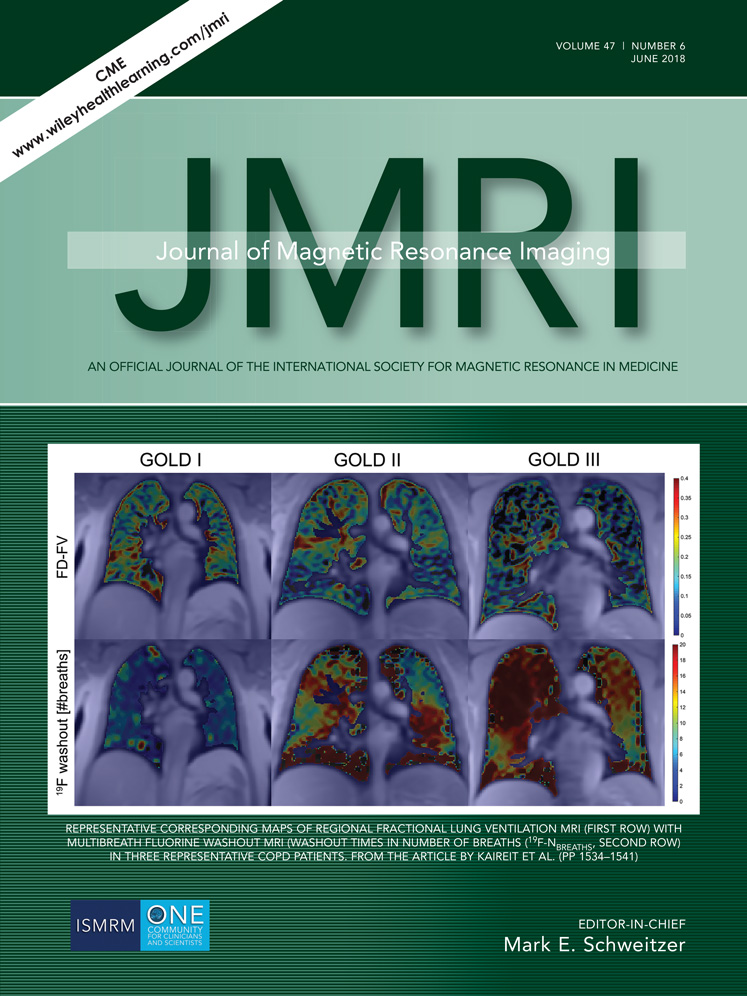Comparison between qualitative and quantitative assessment of background parenchymal enhancement on breast MRI
Abstract
Background
Potential clinical implications of the level of background parenchymal enhancement (BPE) on breast MRI are increasing. Currently, BPE is typically evaluated subjectively. Tests of concordance between subjective BPE assessment and computer-assisted quantified BPE have not been reported.
Purpose or Hypothesis
To compare subjective radiologist assessment of BPE with objective quantified parenchymal enhancement (QPE).
Study Type
Cross-sectional observational study.
Population
Between 7/24/2015 and 11/27/2015, 104 sequential patients (ages 23 – 81 years, mean 49 years) without breast cancer underwent breast MRI and were included in this study.
Field Strength/Sequence
3T; fat suppressed axial T2, axial T1, and axial fat suppressed T1 before and after intravenous contrast.
Assessment
Four breast imagers graded BPE at 90 and 180 s after contrast injection on a 4-point scale (a–d). Fibroglandular tissue masks were generated using a phantom-validated segmentation algorithm, and were co-registered to pre- and postcontrast fat suppressed images to define the region of interest. QPE was calculated.
Statistical Tests
Receiver operating characteristic (ROC) analyses and kappa coefficients (k) were used to compare subjective BPE with QPE.
Results
ROC analyses indicated that subjective BPE at 90 s was best predicted by quantified QPE ≤20.2 = a, 20.3–25.2 = b, 25.3–50.0 = c, >50.0 = d, and at 180 s by quantified QPE ≤ 32.2 = a, 32.3–38.3 = b, 38.4–74.5 = c, >74.5 = d. Agreement between subjective BPE and QPE was slight to fair at 90 s (k = 0.20–0.36) and 180 s (k = 0.19–0.28). At higher levels of QPE, agreement between subjective BPE and QPE significantly decreased for all four radiologists at 90 s (P ≤ 0.004) and for three of four radiologists at 180 s (P ≤ 0.004).
Data Conclusion
Radiologists were less consistent with QPE as QPE increased.
Level of Evidence: 3
Technical Efficacy: Stage 3
J. Magn. Reson. Imaging 2018;47:1685–1691.




